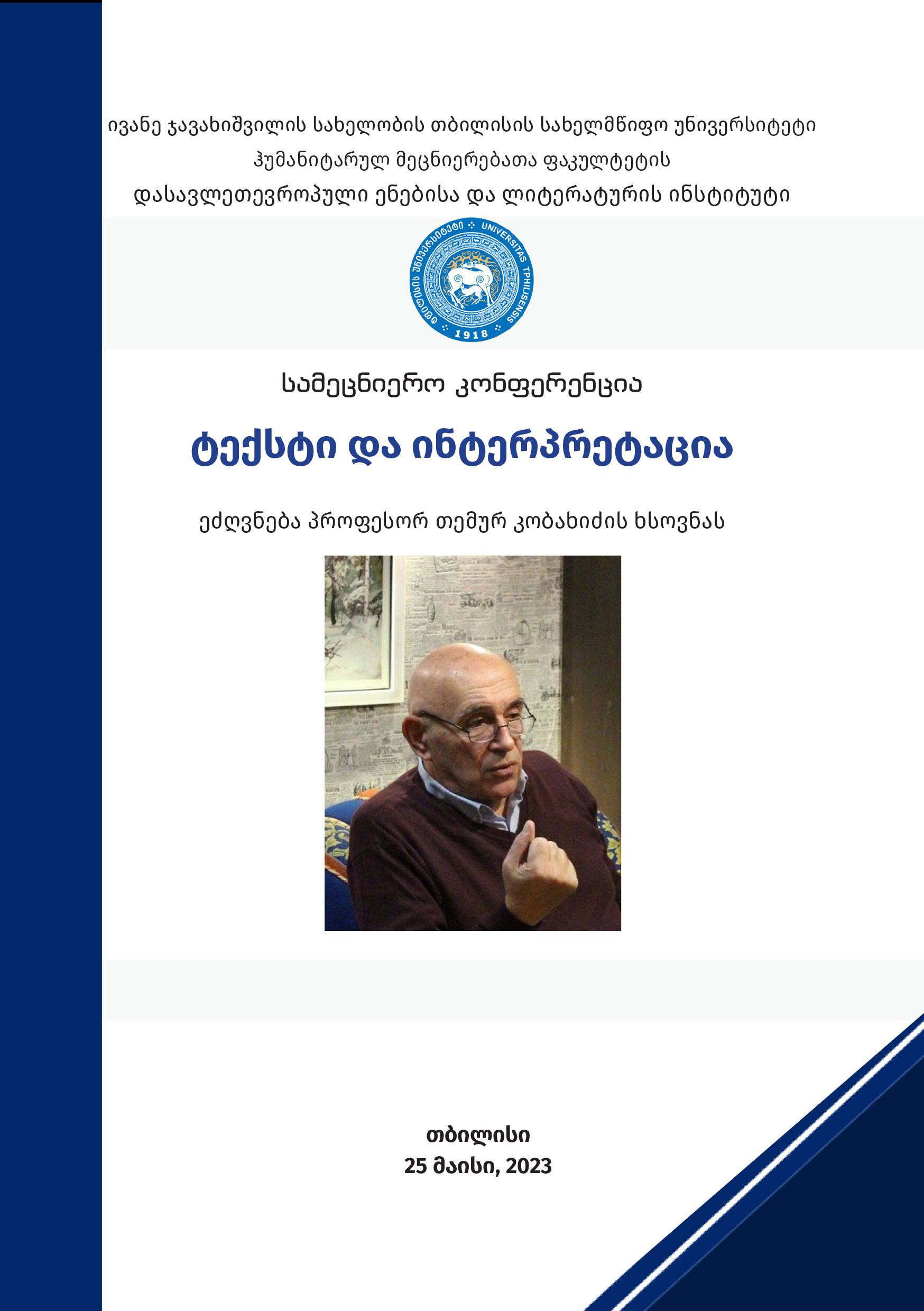The Newest English Translation of the Tbilisian Maqama
DOI:
https://doi.org/10.55804/jtsu-2960-9461-2023-15Keywords:
classical maqama, interpretation, Yiddish, transculturationAbstract
Tbilisian Maqama is the 33th story in the book of the prominent Arab writer al-Hariri (1054-1122). Two permanent characters of the Maqama-cycle – the narrator and the main hero meet each other in the Tbilisian mosque. Maqamas were translated into English several times, but those were mostly exact translations. The newest translation (Imposters) issued by the New York University Press in 2020 is the imitation and a very interesting interpretation of the original version. The fact that one of the fifty maqamas of al-Hariri is called “Tbilisian” mustn’t be a pure accident. It seems that Tbilisi was regarded as one of the main political, trade and cultural centers in the Middle East, but American translator doesn’t pay much attention on it. In the newest translation Tbilisi is mentioned in the text and in the notes as well, although the title of Tbilisian Maqama is remade according to the bestseller by L. Rosten (The Joys of Yiddish) as The Joy of Yarabic. There are approximately fifty words or expressions in Yinglish in the translation. What is the common between the Tbilisian Maqama created in the 12th century and the Yiddish-inflected American English (resp. Yinglish) spoken in northeastern of USA?!
It’s impossible to make the ordinary reader of the 21st century to read the classical text with its simple plot and didacticism, complicated language and rhythmed prose, high style and Quran citations. Translator Michael Cooperson tried to make his work interesting for the English-speakers by the possibilities of global English. In his translation English is represented as a rich language of the classical literature, on the one hand, and as a widespread spoken language, on the other. All of the fifty maqamas are translated into different styles. Cooperson uses classical English writers’ idioms and many slangs.
The imitation of the Tbilisian Maqama is full of associations connected with the main character and the plot of this story. Cooperson chose the language of American Jews here because the main hero’s simulation as if he is disabled, his complains about poverty and illness reminds him the monologues of the 20th century American Jewish performers Henny Youngman, Don Rickles and Rodney Dangerfield. All of them used Yinglish in their performances. The translator mentions also the Imposter-like story “A Yom Kippur Scandal” originally written in Yiddish by Sholem Aleichem (1859-1916) which presents a swindle man like the hero of maqamas. Apart from this, here are allusions from the Old Testament, the texts of Yiddish theater songs etc. Some poems not translated but replaced by original versions written in Yiddish preserving the context and mood. Cooperson tried to create the analogue of the “linguistic acrobatics” of the original version.
The literary pieces of the Middle Ages are often translated separately for the academical purposes with more scrupulosity, special commentaries etc., and separately for ordinary readers with some changes. But in the newest popular translation of Tbilisian Maqama the interpretation of the origin’s language needs no less definitions, explanations. This translation is Transculturation. It’s domestication – as Cooperson notes, he couldn’t find better way to integrate this classical piece in the receiving culture. The newest translation with its linguistical and stylistic diversity can be assessed as post modernistic translation as well.

